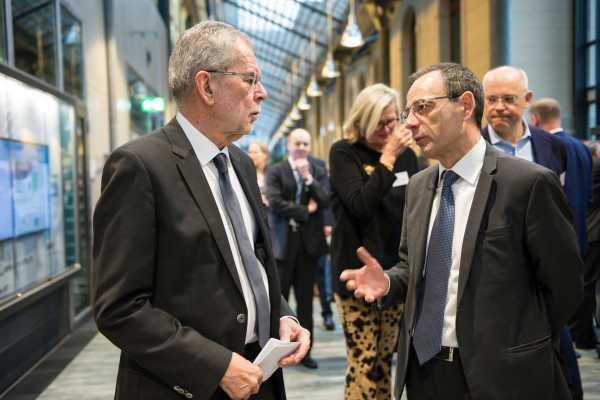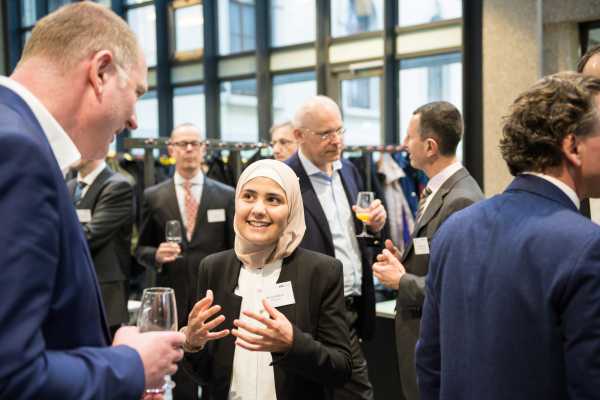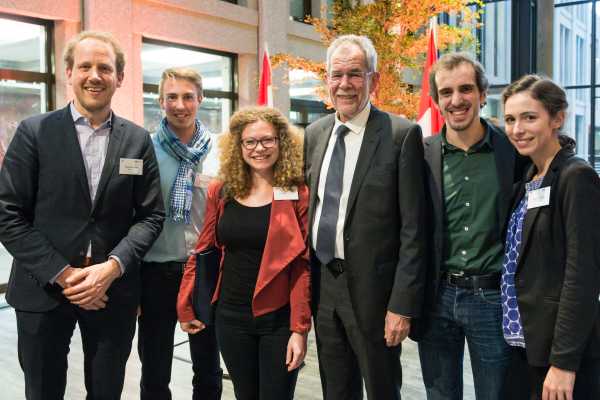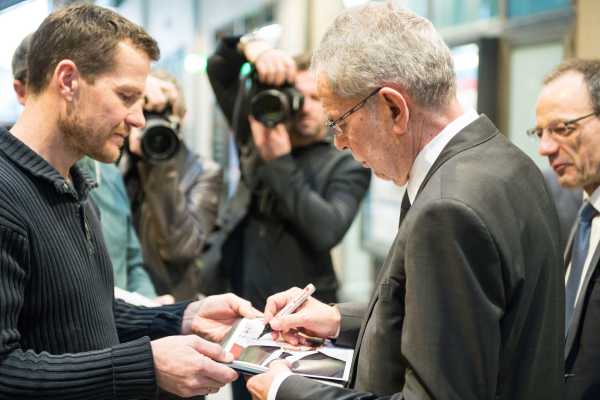Innovation cannot be taught; it must be learned
ETH President Lino Guzzella welcomed Alexander van der Bellen to the University on Friday, where the Austrian President was shown how ETH is encouraging innovation.
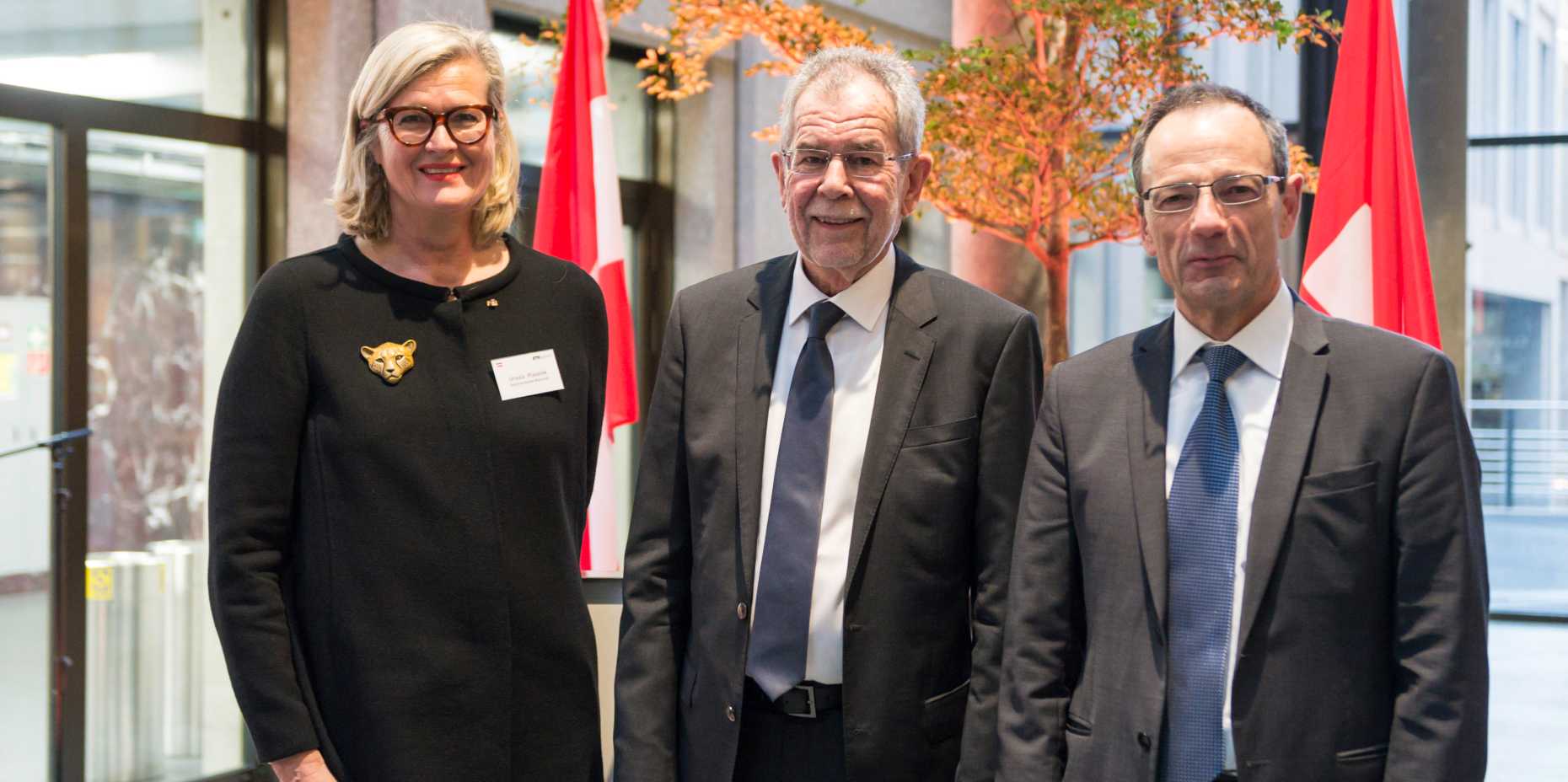
How can research lead to innovation? The Austrian President arrived at ETH Zurich on Friday with a delegation of diplomats and media representatives to find out the answers to this question. The exchange with students and researchers was part of his official visit to Switzerland. In keeping with the theme, ETH President Lino Guzzella greeted Van der Bellen in the LEO building's multifunctional loft, which is used for innovation projects.
Mirko Meboldt, Professor for Product Development at the Department of Mechanical and Process Engineering, presented the concept behind the innovation projects to the guests. In their second semester, prospective mechanical engineers are given large projects to work on in small teams, to encourage them to develop and then implement their own ideas. “You can't teach innovation; every young person has to learn it for themselves,” said Meboldt.
Global knowledge for Switzerland
Lino Guzzella gave an overview of the Swiss educational landscape and the role of the University. “It is our job to bring global knowledge into Switzerland and to provide the country with this knowledge,” he said. Openness and internationality are just as important for this as autonomy and money. “Enforcing borders,” continued Guzzella, “hinders the spread of knowledge.” Providing examples such as the Cybathlon or the construction of a suspension bridge with drones, he showed the assembled guests how ETH Zurich is using its knowledge for the benefit of all: “Technology is there to help people.”
Researchers and students present their projects.
 Alexander Van der Bellen and the other guests enjoy the presentations.
Alexander Van der Bellen and the other guests enjoy the presentations.
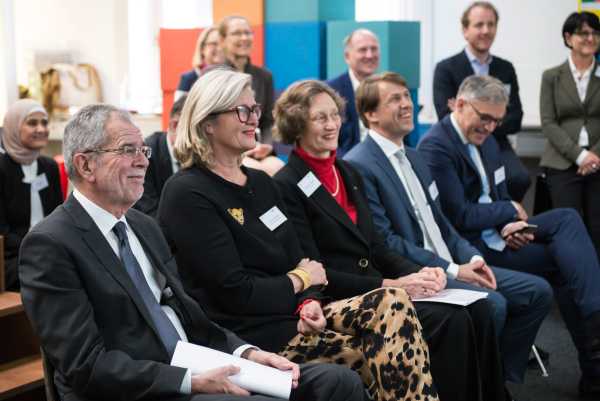 Petrou Anastasios presents the project "Zurich Heart".
Petrou Anastasios presents the project "Zurich Heart".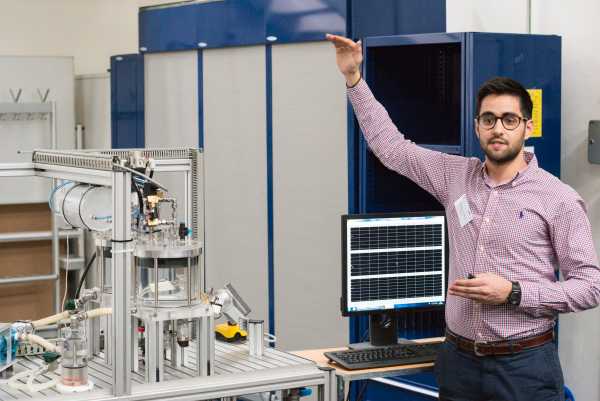 Lino Guzzella in the multifunctional loft in the LEO building
Lino Guzzella in the multifunctional loft in the LEO building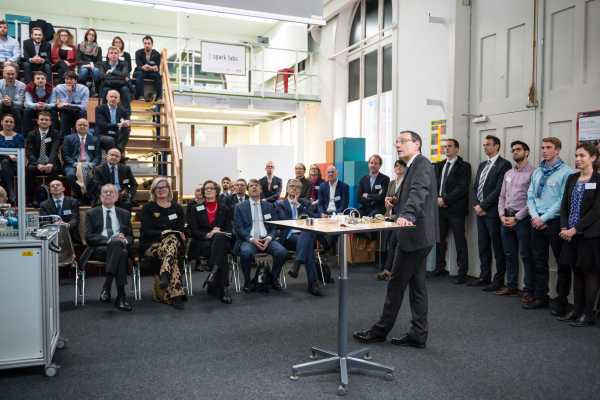 Marianne Schmid Daners presents the project "Zurich Heart".
Marianne Schmid Daners presents the project "Zurich Heart". Mirko Meboldt presents the concept behind the innovation projects.
Mirko Meboldt presents the concept behind the innovation projects.
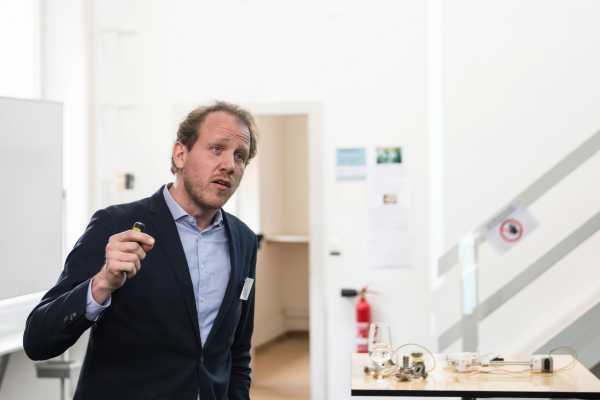 Franz-Josef Obermair describes different possibilities for knowledge transfer.
Franz-Josef Obermair describes different possibilities for knowledge transfer.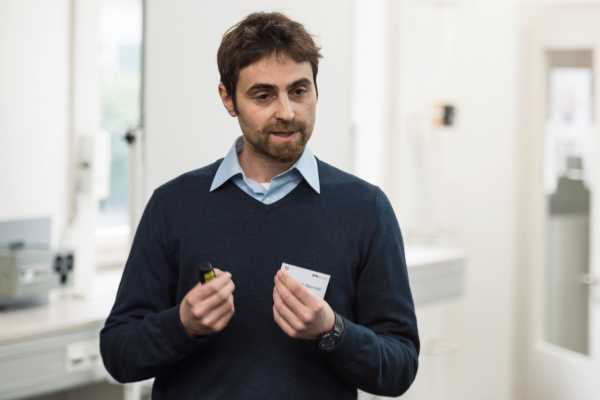
An insight into research projects
Students and researchers then gave short talks about their current projects. Petrou Anastasios, a doctoral student, and the group leader Marianne Schmid Daners – both working in Product Development – presented “Zurich Heart”. Among other goals, this project aims to develop an artificial heart that can adapt to varying levels of activity, thereby minimising one of the biggest current problems with artificial hearts. Bachelor’s students Severine Somlo and Lukas Bircher showed how they want to create a machine to standardise skin cell production for the focus project “SkinReactor”.
Silvio Bonaccio, Head of ETH transfer, outlined the assistance the University gives to young scientists to turn these research projects into startups. Examples include funding instruments such as the Pioneer Fellowships, business plan competitions such as venture, or ETH Zurich's own “Industry Day”, which offers students the chance to make industry contacts. Two Pioneer Fellows finished by describing how they are using ETH's generous support. Sergio Sanabria and his team want to develop a technology to diagnose breast cancer based on the standard ultrasound equipment available in many doctors’ surgeries, while Franz-Josef Obermair is researching innovative immunotherapies to fight cancer.
The President was left impressed
“Now I have an even better impression of ETH than I did before,” said Van der Bellen. He was clearly interested in what he had seen, having already asked a number of questions during the talks. Not every European university offers the same opportunities as ETH. “It is a privilege to study here,” the President added.
He finished the afternoon by joining ambassador Ursula Plassnik to meet a delegation of Austrian students and researchers who study and work at various Swiss universities.

